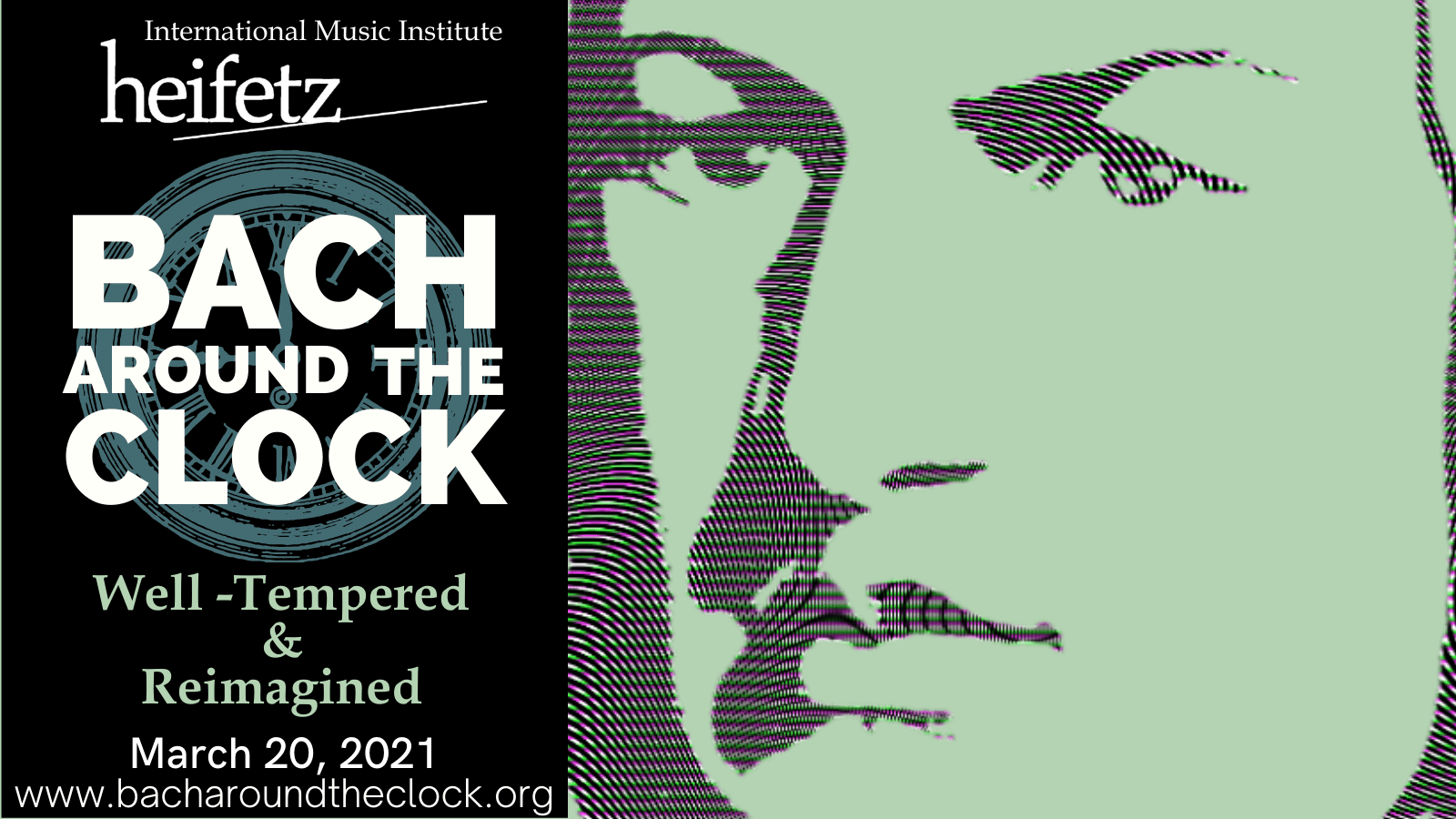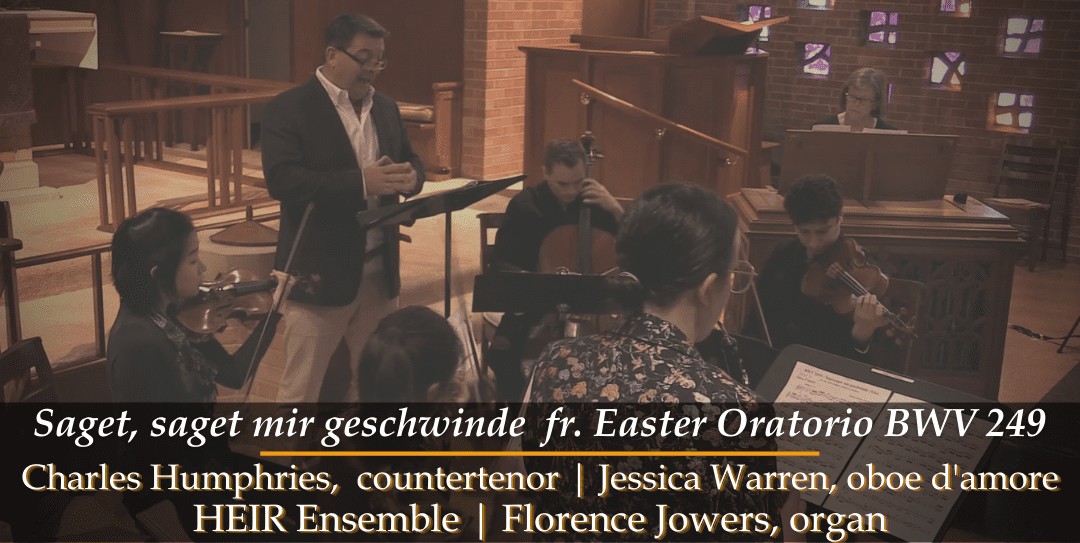A surprising feature – indeed a unique one in Bach’s oratorios – is the omission of an ‘evangelist’ and thus of the biblical story, knowledge of which is taken for granted. The events are portrayed by dialogue alone. Bach’s Easter Oratorio thus has much in common with the secular cantatas that he liked to call dramma per musica (‘musical drama’), and the texts of which consist largely of arguments and counter-arguments from (usually) four mythological figures…. Mary Magdalene’s aria [no. 9] Saget, saget mir geschwinde (‘Tell me, tell me quickly’) introduces a new wind colour: an agitated solo for the oboe d’amore….
“All of these innovations and unexpected features may have caused consternation amongst those who attended the Leipzig Easter service on 1st April 1725 at which the oratorio was heard for the first time, or at least given them something to talk about.”
– Bach scholar Klaus Hoffmann

A memorable performance from Bach Easter Oratorio, taken from Bach Around The Clock 2021. Check out the entire playlist here.


Saget, saget mir geschwinde, Tell me, tell me quickly
Saget, wo ich Jesum finde, Tell, where may I find Jesus
Welchen meine Seele liebt! whom my soul loves!
Komm doch, komm, umfasse mich; Come then, come, embrace me,
Denn mein Herz ist ohne dich for my heart is without you
Ganz verwaiset und betrübt. quite orphaned and distressed
Johann Sebastian Bach never wrote an opera, but his cantatas and oratorios are packed with enough drama, passion, and the range of human emotions that would be perfectly at home in the opera house. And the line between his secular, earthy compositions and exalted ecclesiastical works was sometimes a thin one….
Case in point is the joyous aria sung by Mary Magdelana from Bach’s Easter Oratorio, Saget, saget mir geschwinde (‘Tell me, tell me quickly’), brimming with infectious vitality and a hummable melody that would make Rossini proud. Scholars now speculate that the origins of this infectious tune came from an earlier “pastoral play with four characters [SATB] – two shepherdesses, Doris and Sylvia, and two shepherds, Menalcas and Damoetas,”
According to the recovered libretto, this “good news” aria may have been a paean by one of the shepherdesses anticipating the “thousand flatteries” she will shower on the local duke. Regardless, Bach’s cagy borrowing of tunes from his own catalog helped him create one of his most uplifting creations!
From Bach Around the Clock 2021, Charles Humphries is the soloist and Jessica Warren is the oboe d’amore soloist in the aria in question – Saget, saget mir geschwinde (‘Tell me, tell me quickly’) from Bach’s Easter Oratorio, BWV 249. Joining them are the members of the 2021 inaugural Heifetz Ensemble in Residence (HEIR) program:Julia Angelov and Yezu Woo, violins; Matt Cohen, viola, and Coleman Itzkoff, cello. Christ Lutheran Church music director Florence Jowers is the organist on a Taylor & Boody portative organ, manufactured in Staunton, VA.


